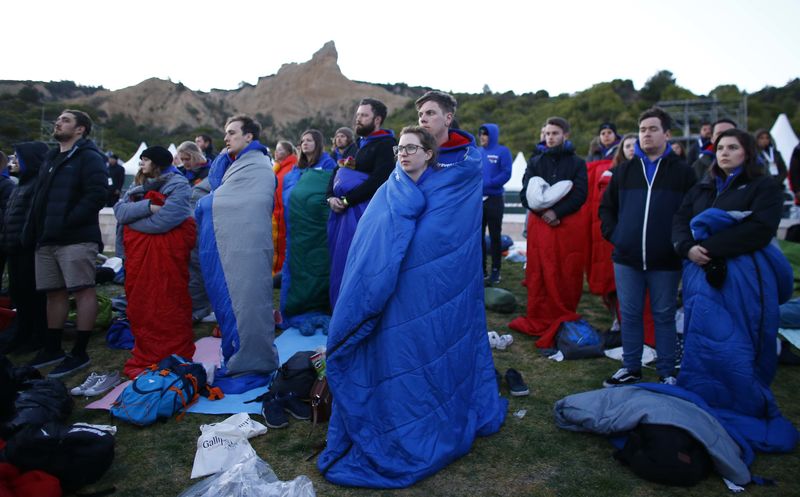By Harry Pearl
SYDNEY (Reuters) - Thousands of people in Australia, New Zealand and Thailand attended dawn services and military parades on Tuesday to commemorate ANZAC Day, the Gallipoli landings during World War One and the infamous Thai-Burma death railway of World War Two.
The day marks the landing of thousands of troops from the Australian and New Zealand Army Corps (ANZAC) on the Gallipoli peninsula in Turkey on April 25, 1915.
The ill-fated military campaign against the Turks has become an important anniversary to remember troops from both countries who served and died in war.
Gallipoli was the first time that soldiers from Australia and New Zealand fought under their own flags and is seared in the national consciousness as a point where their nations came of age, emerging from the shadow of the British empire.
Television footage showed veterans and their families marching by flag-waving crowds and laying wreaths at war memorials in Sydney and other Australian cities.
Australian Foreign Minister Julie Bishop and New Zealand Justice Minister Amy Adams were due to attend a dawn service at ANZAC Cove on the Gallipoli peninsula later on Tuesday.
Turks mark what they call the Canakkale War on March 18 - the day in 1915 that saw the start of the main Allied naval assault on the Dardanelles Straits. More than 130,000 were killed during the campaign, most of them Turks.
The 102nd anniversary of ANZAC Day was being held amid tight security in Gallipoli after the Australian government said earlier this month it had received information of a possible attack during the ceremony.
Australian Prime Minister Malcolm Turnbull posted a message and photo on Twitter on Tuesday after his unannounced visit to Australian troops in Afghanistan and Iraq this week.
"We do not glorify war. ANZAC Day is not the anniversary of a great victory, but it commemorates the triumph of the human spirit," he said in a video message posted on Facebook (NASDAQ:FB).
In Thailand, two former prisoners of war joined other Australians at Hellfire Pass in Kanchanaburi province, where POWs were forced build the infamous Thai-Burma "death railway" in 1942-43.
"There's a lot of young people coming now and it's good that they learn what happened during the war," said 100-year-old former POW Harold Martin.
Neil MacPherson, 95, who also worked on the railway said: "I do think of mates of mine that didn't come through it and remembered them as they were then, rather than as Harold and I are now."

More than 90,000 men died during the railway's construction - 12,000 prisoners of war and more than 80,000 Asian labourers.